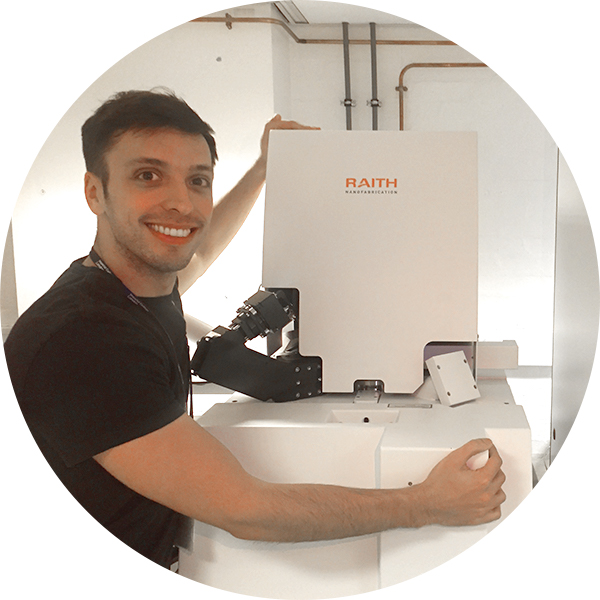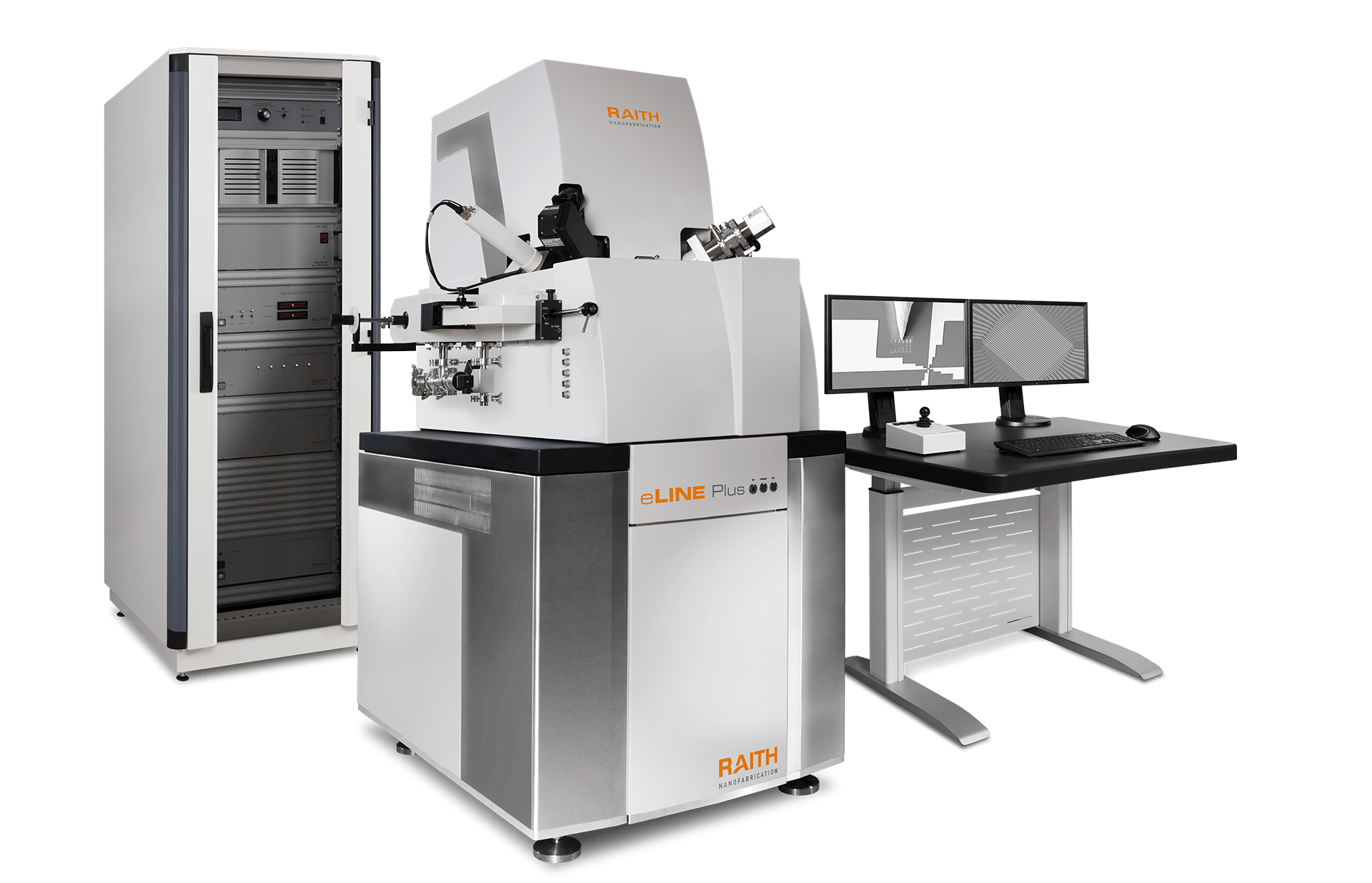
Dr. Javier Cambiasso
eLINE Plus at the Imperial College London

Dr. Javier Cambiasso
eLINE Plus at the Imperial College London
“We have been using Raith eLINE for the last 8 years, and yet we bought a second one (in fact two more, one for our group at Imperial College London and one for our new group at LMU, Munich). We are fascinated by the amount of options available in the system (software + hardware). Raith provides support on all stages of user development, beginning with an introductory course on how to use the machine that lasts for a week (!).
Our research group is interested in the study of metallic and dielectric nanostructures for several optical applications. Lately we have been
- exploiting the low losses of dielectric antennas to enhance the radiation of single-photon emitters located in their vicinity,
- channeling the electromagnetic losses in metallic antennas into hot-electron decay channels to drive chemical reactions, and
- studying super-resolution schemes to break the near-field diffraction limit with far-field optics.
For all those applications we need to fabricate nanostructures of specific shapes, and that is where Raith’s eLINE comes into play.
As a beginner user, you can easily obtain SEM images in a matter of hours and pattern sub-100 nm structures in a matter of days.
Intermediate users can create much more detailed patterns by experimenting with multi-step lithography, which is possible thanks to Raith’s range of automatic alignment procedures. Intermediate users can also profit from automated SEM micrograph acquisition procedures to reduce the workload and increase throughput. They can also design their patterns in Matlab with a dedicated set of functions and prepare samples where a plethora of parameters are modified in order to be automatically scanned later.
Advance users can do statistical analysis on their samples (also within the software), correct for proximity effects, and write JavaScript code to control the system: i.e. tailor the machine to their needs.
This versatility offered by Raith to users for controlling the machine is, in my experience, unmatched. Besides, they have developed a lot of efforts to make the software as glitch-free and amenable as possible. The hardware is, of course, top German quality, and this level of perfection is also correlated to a super-responsive support team.
The delivery and installation were carried out with utmost professionalism and a representative from Raith was there from the first day to train local prospective users in the machine.
In my experience, Raith is unique not so much in the quality of its hardware (which is still one of the leaders, but there are many companies out there with excellent hardware as well) but more so in the capabilities and versatility of its software, which allows the system to be controlled with as much freedom as the users desire.”
